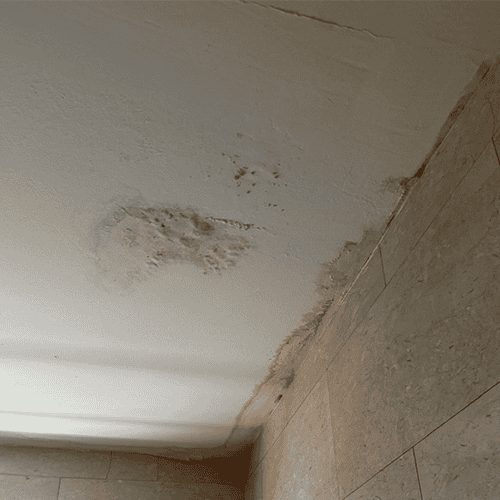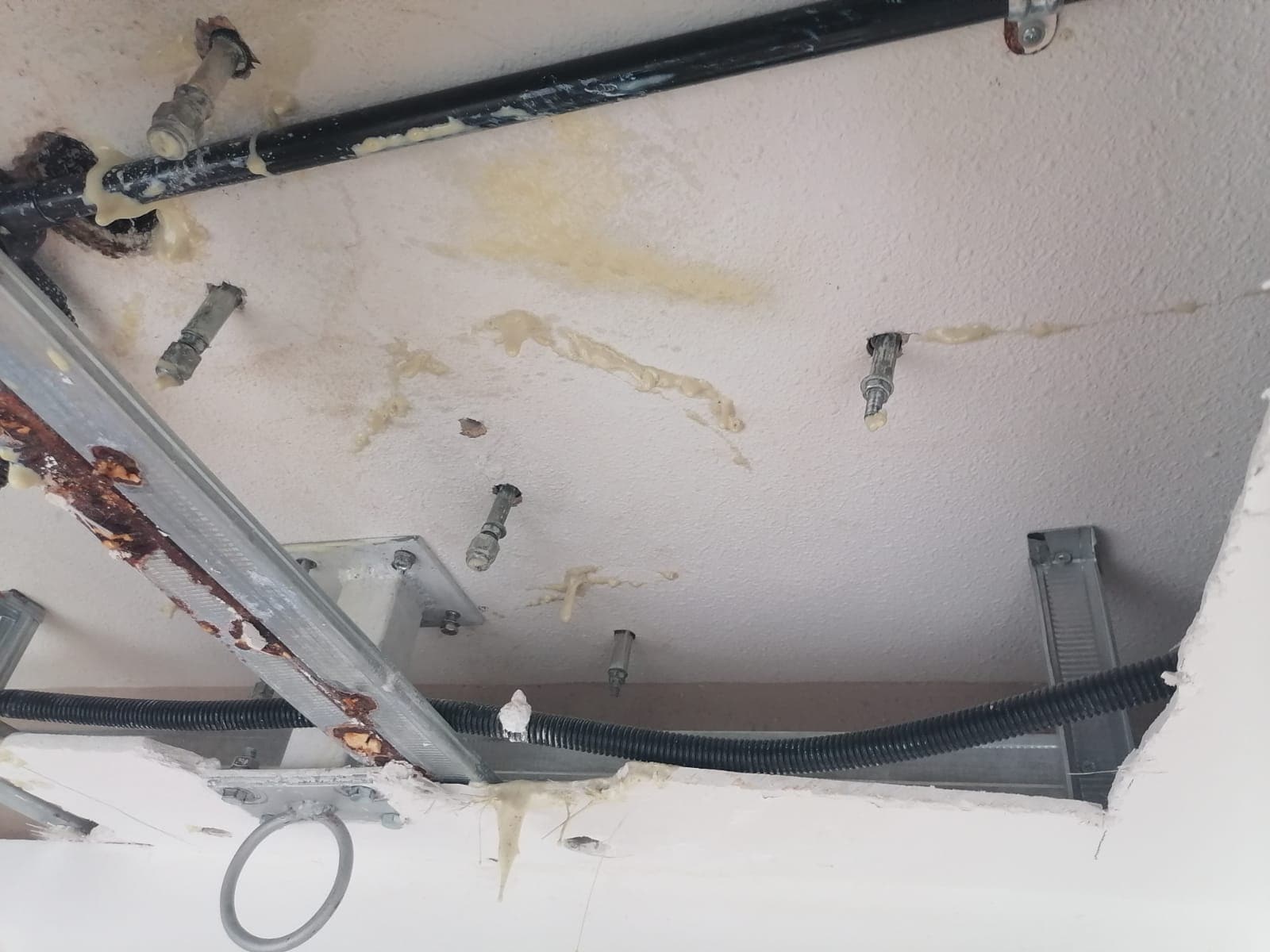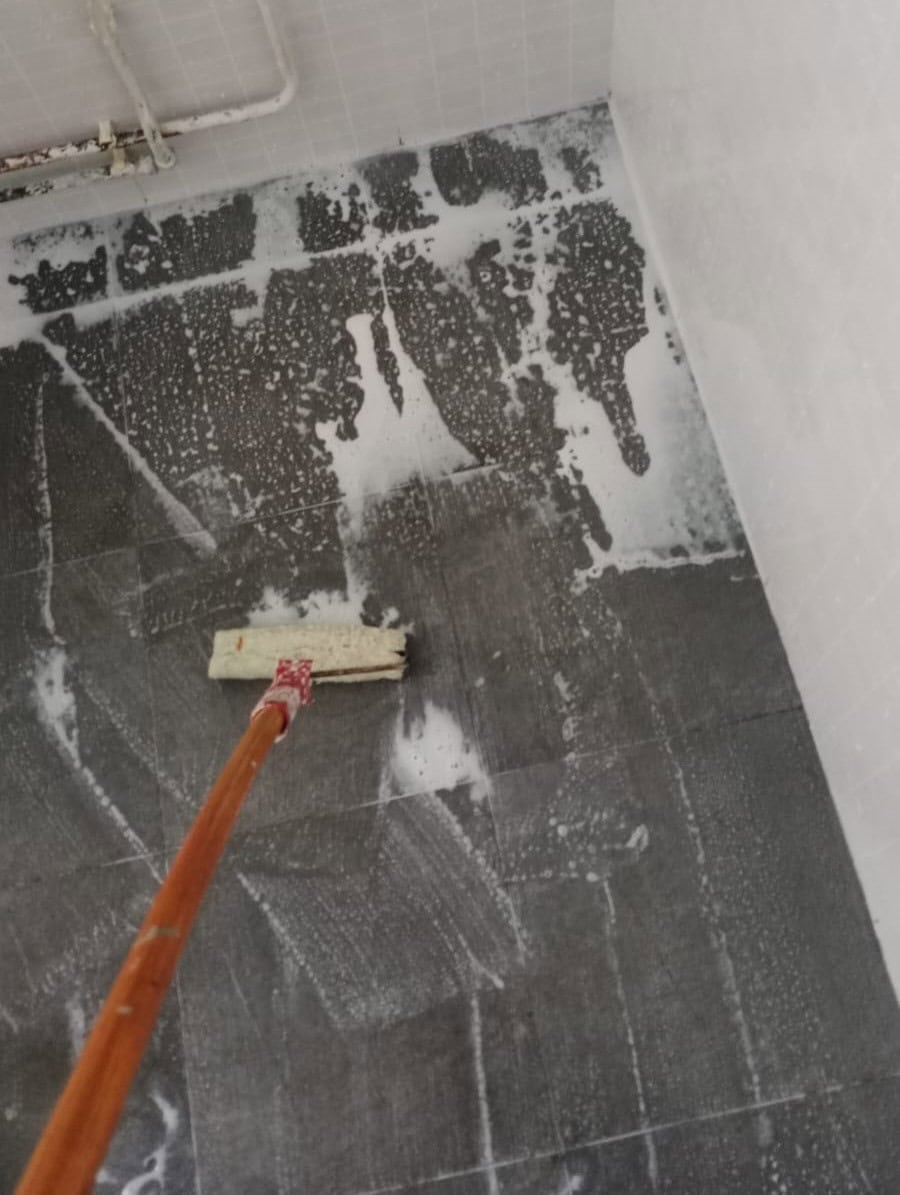Water leakage is a pervasive issue affecting many households in Singapore, whether in HDB flats, condos, or landed houses. Left unaddressed, these leaks can cause significant structural damage, leading to mold growth, weakened concrete, and even safety hazards. Homeowners must act promptly when signs of water leakage, such as damp patches, water stains, or ceiling leaks, begin to appear.
Types of Water Leakage in Singapore’s HDB Flats, Condos, and Landed Houses
Water leakage can occur in various parts of a home, depending on the building structure and the type of property. Singapore’s tropical climate and frequent rainfall can exacerbate leakage problems, especially in areas with poor waterproofing. Understanding the types of leakage that commonly occur in HDB flats, condos, and landed houses can help homeowners take early action.
HDB Flats
HDB flats are designed with vertical stacking, water leakage issues often stem from inter-floor seepage. The most frequent type of leakage in HDB flats is bathroom-related, where water seeps from one unit to the ceiling of the unit below. This type of leakage is typically caused by faulty waterproofing, old tiles, or cracks in the bathroom’s concrete slab, allowing water to penetrate downwards. Over time, this can lead to significant ceiling damage in the unit below, manifesting as water stains, damp patches, or mold growth.
Another common issue in HDB flats is the seepage, particularly on exterior-facing walls. This happens when rainwater or moisture enters through cracks in the walls, leading to dampness, peeling paint, and sometimes structural damage. Wall leakage is also a frequent problem in older HDB flats, where waterproofing systems have deteriorated due to wear and tear.
Condos
In condominiums, water leakage can be more complex due to shared walls, plumbing systems, and larger spaces. Condo bathrooms are prone to leakage similar to HDB flats, often caused by poor waterproofing or damaged pipes. Water can seep through bathroom floors, causing damage not only to the bathroom but also to adjacent rooms or units.
Condos also face water leakage in basements and common areas due to improper waterproofing or cracks in the concrete slabs. In high-rise condos, external wall leaks can become problematic, as water ingress through exterior cracks can lead to wall dampness, mold, and even damage to internal walls.
Landed Houses
For landed properties, water leakage tends to originate from outdoor exposure. Roof leaks are among the most common problems in landed homes, as poor roofing materials or damaged waterproofing membranes allow rainwater to seep through. Another significant issue is water seepage through the foundation or basement, especially after heavy rainfall. Landed houses may also experience leakage through external walls or windows, especially if the building’s waterproofing system is outdated or poorly maintained.
Due to the larger surface area of landed properties, addressing these leaks often requires more extensive work, and the costs associated with waterproofing and repairs are usually higher than in HDB flats or condos.
Toilet Water Leak Repair in HDB Flats, Condos, and Landed Houses
Toilet water leakage is a major concern for homeowners as it can lead to long-term structural damage and persistent mold growth if not properly addressed. The cost of water leakage repair such leaks varies depending on the type of housing, the source of the leak, and the repair methods used. Here’s a detailed look at the costs involved for HDB flats, condos, and landed houses.
- Water Damage is often caused by leaks from plumbing, roofs, or air conditioning units, resulting in stains, discoloration, or structural weakening.
- Cracks and Holes can occur due to settling, temperature changes, or impacts, requiring patching or more extensive repairs.
- Mold and Mildew growth from moisture can lead to health issues and may require remediation alongside repairs.
- Ceiling Finishing includes repainting, retexturing, or installing new ceiling tiles or panels to improve aesthetics.
- Structural Repair issues with the ceiling framework, such as sagging or weakened supports, may be necessary for safety and structural integrity.
HDB Flats
In HDB flats, ceiling leaks are commonly caused by water seeping from the bathroom above, either through cracked tiles or faulty waterproofing. Toilet water leakage often results from cracked bathroom floor tiles or inadequate waterproofing. When water seeps through the bathroom floor into the ceiling of the lower unit, repair work must involve both the upper and lower units. The typical cost for fixing toilet water leakage in HDB flats should include the identification of the source of the leak, applying non-invasive waterproofing methods such as PU injection grouting, and sealing any cracks or gaps in the concrete slab.
PU Injection Grouting:
A popular choice for HDB toilet leakage repair, PU injection grouting involves injecting polyurethane into cracks and gaps in the concrete to create a watertight seal. This method is cost-effective and non-disruptive, as it does not require hacking of the bathroom tiles. The cost for PU injection grouting in HDB flats depends on the extent of the damage and the area covered. The process typically takes 1 to 2 days, depending on the complexity of the job.
Condos
In condominiums, toilet leakage repairs are more complicated and expensive than in HDB flats due to the bathroom sizes and more intricate plumbing systems if the leak originates from shared plumbing systems or common areas. The cost of fixing a toilet leak in a condo should include re-waterproofing the bathroom floor, sealing cracks, and addressing any plumbing issues contributing to the leak.
In some cases, especially for older condos, new waterproofing coatings may be required. This involves stripping the old waterproofing layer and reapplying a fresh membrane to prevent water from seeping through the floor. The cost should include the waterproofing membrane replacement such as stripping, reapplication, and ensuring the waterproofing is fully set before reinstalling any fixtures.
Landed Houses
For landed houses, toilet water leakage repairs are typically more involved due to the larger bathroom sizes, more complex plumbing systems, and the potential need to address foundation issues if water seeps through the house’s structure.
Landed house ceiling leaks are often caused by roof leaks or poor waterproofing in upper-story bathrooms. If a ceiling leak is due to a roof leak, repairs may be necessary for both the ceiling and the roof.
For older landed properties or homes with significant water damage, it may be essential to undertake a complete waterproofing replacement. Re-applying a waterproofing layer to the bathroom floor, addressing structural damage to the foundation, and repairing damaged plumbing. The cost for such a comprehensive repair is much higher and the process can be longer depending on the extent of the work.
Who is Responsible for Water Leakage Repair Costs in Singapore?
Determining who is responsible for the cost of water leakage repairs in Singapore depends on the type of property and the source of the leak. For example, in HDB flats, the responsibility for repairing water leaks often falls on the homeowner, unless the leak is caused by structural issues under the purview of the HDB. Similarly, condo owners are responsible for repairing leaks within their units, while the condo management may be responsible for leaks originating from common areas.
HDB Flats
In HDB flats, the responsibility for ceiling water leakage repairs depends on the location and cause of the leak. If the leak is caused by faulty waterproofing in the bathroom, the owner of the upper unit is typically responsible for repairing the leak. However, if the leak is caused by a structural issue, such as a crack in the building’s foundation or walls, the HDB may be responsible for covering the repair costs.
Ceiling leaks are a common issue in HDB flats and can cause significant damage if not addressed promptly. Responsibility for ceiling leaks in HDB flats generally falls into different categories. If the leak originates from within your unit, such as from a leaking pipe or appliance, the homeowner is responsible for the repair. The estimated repair cost ranges from hundreds to thousands of dollars depending on the severity of the condition. This includes engaging a waterproofing specialist to perform ceiling waterproofing repair.
If the leak is coming from the unit above due to a bathroom leak or other issue, the responsibility typically lies with the owner of the upstairs unit. They are required to perform the necessary repairs, such as toilet leakage repair or bathroom leak repair, to stop the leak and mitigate further damage.
Condos
In condos, the responsibility for water leakage repairs lies with the individual homeowner if the leak originates within their unit. The repair cost depends on the severity of the repair, which may cost more than thousands of dollars if the owner delay and ignore the situation and leads to more complicated situation. However, if the leak is caused by a shared plumbing system or a common area, the condo management may be responsible for covering the repair costs.
For leaks originating from common areas, such as exterior walls, roofs, or shared plumbing systems, the condo management is typically responsible for repairing the leak. Homeowners should report the issue to the management office, which will arrange for repairs and cover the associated costs.
Landed Houses
In landed houses, the homeowner is solely responsible for covering the cost of water leakage repairs, as there is no shared management system. Repair costs can be from thousands or even up to 5 figures depending on its complications or any structural damages. Homeowners should be proactive in addressing leaks, as delaying repairs can lead to more significant damage and higher repair costs.
Best Waterproofing Methods in Singapore
Waterproofing is essential in preventing water leaks in homes, especially in Singapore’s humid and rainy climate. Choosing the right waterproofing method can save homeowners a few thousand dollars from costly repairs in the future. The most common waterproofing methods in Singapore include PU injection grouting, waterproofing membranes, and cementitious waterproofing.
PU Injection Grouting
PU injection grouting, also known as polyurethane injection grouting or PU grouting, is a highly effective waterproofing technique that utilizes polyurethane resin to seal cracks and gaps in concrete structures, preventing water leakage. This method is gaining popularity due to its efficiency, cost-effectiveness, and minimal disruption to existing structures.
PU injection grouting is a non-invasive method that involves injecting polyurethane resin into cracks and voids to seal them effectively. The resin expands upon contact with water, filling the entire space and creating a waterproof barrier.
This approach effectively seals leaks and prevents water seepage, as the foam expands to fill gaps and create a strong seal. PU injection is fast-curing and highly flexible, making it an excellent solution for repairing water leaks.
PU injection is often used to repair bathroom and ceiling leaks, as it is non-invasive and does not require the hacking of tiles or walls. The expense associated with utilizing these advanced technologies can vary significantly, ranging from several hundred to several thousand dollars. This cost is subject to additional repair expenses that may arise, such as the potential need for false ceiling replacement. This process can be completed within 1 to 2 days, making it a quick and affordable solution for homeowners.
Waterproofing Membranes
Waterproofing membrane coating is another effective solution, which involves applying a waterproofing membrane that can be liquid-based. This method is versatile and can be applied to various surfaces, including roofs and walls. It forms a strong barrier against water and protects structures from hydrostatic pressure, making it a reliable choice for many applications.
Waterproofing membranes are another common method used to prevent water leakage in homes. These membranes are applied to roofs, walls, and bathroom floors to create a watertight barrier. There are various types of waterproofing membranes, including liquid-applied membranes, sheet membranes, and torch-on membranes.
Cementitious Waterproofing
Cementitious waterproofing is a popular choice, especially for areas with high moisture, such as bathrooms and kitchens, it is durable and prevents water ingress in concrete structures. This method involves applying a cement-based waterproofing solution to surfaces, which is easy to apply and can often be done by non-professionals. It provides a durable and strong barrier against water, making it a reliable option for many homeowners. Cementitious waterproofing is commonly used in basements, roofs, and bathrooms.
Non-Hacking Waterproofing
Non-hacking waterproofing is a modern technique that allows for waterproofing without extensive hacking or demolition. Non-hacking waterproofing offers several benefits, making it an attractive option for many homeowners and property managers in Singapore.
One of the most significant benefits of non-hacking waterproofing is that it minimizes disruption to the living or working environment. Since this method does not require extensive demolition or hacking of walls and floors, residents can continue their daily activities without major interruptions.
Non-hacking waterproofing can be more cost-effective compared to traditional waterproofing methods. By reducing the need for extensive renovations and the labor associated with them, property owners can save on both material and labor costs.
The application process for non-hacking waterproofing is generally faster than traditional methods. Without the need for hacking and extensive prep work, contractors can complete the job in a shorter time frame, allowing property owners to return to normalcy more quickly.
Since non-hacking waterproofing avoids extensive demolition, it helps preserve the structural integrity of the building. This is particularly important in older buildings where hacking can lead to further damage or complications.
Non-hacking waterproofing methods utilize advanced materials and techniques that provide effective sealing against water ingress. Many of these methods can create a seamless barrier, reducing the risk of leaks and ensuring long-lasting protection.
This approach can be applied to various surfaces and types of structures, including residential homes, commercial buildings, and industrial facilities. Its versatility makes it suitable for different applications, such as bathrooms, kitchens, balconies, and roofs.
Since non-hacking waterproofing involves fewer materials and less construction work, it typically generates less waste. This not only benefits the environment but also reduces disposal costs associated with demolition debris.
Many non-hacking waterproofing methods utilize high-quality materials designed to withstand the test of time, ensuring long-lasting protection against water damage. This durability can lead to lower maintenance costs in the long run.
By avoiding hacking, non-hacking waterproofing helps maintain the aesthetics of walls and ceilings. There is no need for repainting or refinishing the surrounding areas, which can save both time and money on post-repair cosmetic work.
By investing in proper waterproofing methods, such as PU injection grouting or waterproofing membranes, homeowners can protect their homes from water ingress and ensure the longevity of their property.
SWC Construction provides a hassle-free solution that focuses on your convenience and peace of mind. Our skilled team is committed to offering efficient, customized solutions that ensure each repair is completed quickly and effectively. By utilizing the latest techniques and premium materials, we guarantee durable results while minimizing any disruption to your daily routine.
With many satisfied clients highlighting our seamless service and expertise, you can count on SWC Construction to address your water leakage concerns.
Contact us today for a smooth and worry-free experience!





